#2 May 1918
Explore tagged Tumblr posts
Photo

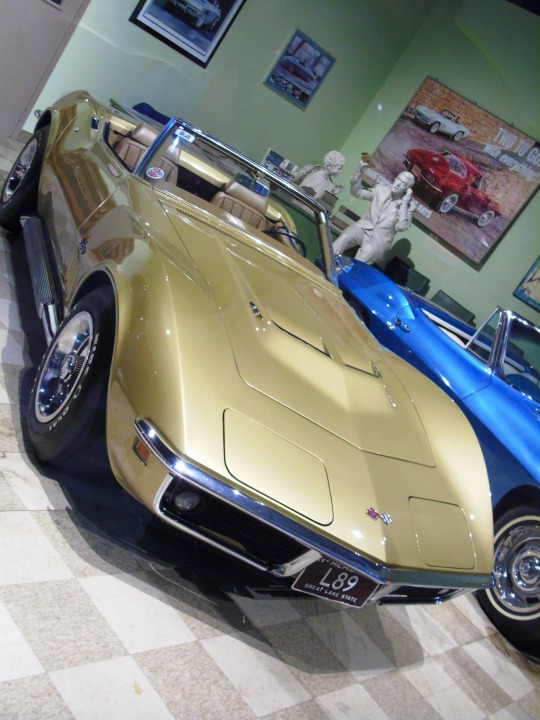








General Motors acquired the Chevrolet Motor Company of Delaware on May 2, 1918.
#Chevrolet Tahoe#Chevrolet Suburban#Chevrolet Corvette#GMC Yukon#Chevy#Chevrolet Impala#Chevrolet Nova#original photography#travel#USA#Torrington Cruise Night#Wyoming#rental car#General Motors#acquired#Chevrolet Motor Company#2 May 1918#105th anniversary#US history#B & K Root Beer Stand#tourist attraction#engineering#vacation#summer 2019#2022#Van Wert#Dinosaur National Monument#Utah#South Lake Tahoe#Nevada
7 notes
·
View notes
Text


Band of Brothers Birthdays
January
1 John S. Zielinski Jr. (b. 1925)
21 Richard D. “Dick” Winters (b. 1918)
26 Herbert M. Sobel (b. 1912)
30 Clifford Carwood "Lip" Lipton (b. 1920)
31 Warren H. “Skip” Muck (b. 1922) & Robert B. Brewer (b. 1924)
February
8 Clarence R. Hester (b. 1916)
18 Thomas A. Peacock (b. 1920)
23 Lester A. “Les” Hashey (b. 1925)
March
1 Charles E. “Chuck” Grant (b. 1922)
2 Colonel Robert L. “Bob” Strayer (b. 1910)
4 Wayne “Skinny” Sisk (b. 1922)
10 Frank J. Perconte (b. 1917)
13 Darrell C. “Shifty” Powers (b. 1923)
14 Joseph J. “Joe” Toye (b. 1919)
24 John D. “Cowboy” Halls (b. 1922)
26 George Lavenson (b. 1917) & George H. Smith Jr. (1922)
27 Gerald J. Loraine (b. 1913)
April
3 Colonel Robert F. “Bob” Sink (b. 1905) & Patrick S. “Patty” O’Keefe (b. 1926)
5 John T. “Johnny” Julian (b. 1924)
10 Renée B. E. Lemaire (b. 1914)
11 James W. Miller (b. 1924)
15 Walter S. “Smokey” Gordon Jr. (b. 1920)
20 Ronald C. “Sparky” Speirs (b. 1920)
23 Alton M. More (b. 1920)
27 Earl E. “One Lung” McClung (b. 1923) & Henry S. “Hank” Jones Jr. (b. 1924)
28 William J. “Wild Bill” Guarnere (b. 1923)
May
12 John W. “Johnny” Martin (b. 1922)
16 Edward J. “Babe” Heffron (b. 1923)
17 Joseph D. “Joe” Liebgott (b. 1915)
19 Norman S. Dike Jr. (b. 1918) & Cleveland O. Petty (b. 1924)
25 Albert L. "Al" Mampre (b. 1922)
June
2 David K. "Web" Webster (b. 1922)
6 Augusta M. Chiwy ("Anna") (b. 1921)
13 Edward D. Shames (b. 1922)
17 George Luz (b. 1921)
18 Roy W. Cobb (b. 1914)
23 Frederick T. “Moose” Heyliger (b. 1916)
25 Albert Blithe (b. 1923)
28 Donald B. "Hoob" Hoobler (b. 1922)
July
2 Gen. Anthony C. "Nuts" McAuliffe (b. 1898)
7 Francis J. “Frank” Mellet (b. 1920)
8 Thomas Meehan III (b. 1921)
9 John A. Janovec (b. 1925)
10 Robert E. “Popeye” Wynn (b. 1921)
16 William S. Evans (b. 1910)
20 James H. “Moe” Alley Jr. (b. 1922)
23 Burton P. “Pat” Christenson (b. 1922)
29 Eugene E. Jackson (b. 1922)
31 Donald G. "Don" Malarkey (b. 1921)
August
3 Edward J. “Ed” Tipper (b. 1921)
10 Allen E. Vest (b. 1924)
15 Kenneth J. Webb (b. 1920)
18 Jack E. Foley (b. 1922)
26 Floyd M. “Tab” Talbert (b. 1923) & General Maxwell D. Taylor (b. 1901)
29 Joseph A. Lesniewski (b. 1920)
31 Alex M. Penkala Jr. (b. 1924)
September
3 William H. Dukeman Jr. (b. 1921)
11 Harold D. Webb (b. 1925)
12 Major Oliver M. Horton (b. 1912)
27 Harry F. Welsh (b. 1918)
30 Lewis “Nix” Nixon III (b. 1918)
October
5 Joseph “Joe” Ramirez (b. 1921) & Ralph F. “Doc” Spina (b. 1919) & Terrence C. "Salty" Harris (b. 1920)
6 Leo D. Boyle (b. 1913)
10 William F. “Bill” Kiehn (b. 1921)
15 Antonio C. “Tony” Garcia (b. 1924)
17 Eugene G. "Doc" Roe (b. 1922)
21 Lt. Cl. David T. Dobie (b. 1912)
28 Herbert J. Suerth Jr. (b. 1924)
31 Robert "Bob" van Klinken (b. 1919)
November
11 Myron N. “Mike” Ranney (b. 1922)
20 Denver “Bull” Randleman (b. 1920)
December
12 John “Jack” McGrath (b. 1919)
31 Lynn D. “Buck” Compton (b. 1921)
Unknown Date
Joseph P. Domingus
Richard J. Hughes (b. 1925)
Maj. Louis Kent
Father John Mahoney
George C. Rice
SOURCES
Military History Fandom Wiki
Band of Brothers Fandom Wiki
Traces of War
Find a Grave
#this is going off who was on on the show#i double checked the dates and such but if you notice any mistakes please let me know :)#band of brothers#easy company#hbo war#not gonna tag everyone lol#mine: misc#yep it's actually Halls and not Hall#i've seen Terrence Harris's name spelled with as Terence but wenand t with two Rs s#since that's how it's spelled on photos of memorials and on his gravestone#I’ll do the pacific next! should be significantly shorter since there’s far fewer characters 😅
192 notes
·
View notes
Text
Easy Co. Oldest to Youngest
if there's anything incorrect or anyone missing please comment🤣 this is all I could find.
Roy Cobb: 18 June 1914
Joe Liebgott: 17 May 1915
Frank Perconte: 10 March 1917
Dick Winters: 21 January 1918
Harry Welsh: 27 September 1918
Lewis Nixon: 30 September 1918
Joe Toye: 14 March 1919
Ralph Spina: 5 October 1919
Robert van Klinken: 31 October 1919
Carwood Lipton: 30 January 1920
Thomas Peacock: 18 February 1920
Ron Speirs: 20 April 1920
Alton More: 22 April 1920
Bull Randleman: 20 November 1920
George Luz: 17 June 1921
Popeye Wynn: 10 July 1921
Don Malarkey: 31 July 1921
Ed Tipper: 3 August 1921
Joe Ramirez: 5 October 1921
Buck Compton: 31 December 1921
Skip Muck: 31 January 1922
Chuck Grant: 1 March 1922
Skinny Sisk: 4 March 1922
Johnny Martin: 12 May 1922
David Webster: 2 June 1922
Donald Hoobler: 28 June 1922
Moe Alley: 20 July 1922
Pat Christenson: 23 July 1922
Eugene Jackson: 29 July 1922
Jack Foley: 18 August 1922
Eugene Roe: 17 October 1922
Shifty Powers: 13 March 1923
Earl McClung: 27 April 1923
Bill Guarnere: 28 April 1923
Babe Heffron: 16 May 1923
Floyd Talbert: 26 August 1923
John Julian: 5 April 1924
James Miller: 11 April 1924
Alex Penkala: 31 August 1924
Tony Garcia: 15 October 1924
Lester Hashey: 23 February 1925
John Janovec: 9 July 1925
Patrick O’Keefe: 3 April 1926
#band of brothers#easy company#I am not going to tag them all#this was partially inspired by my need to see if Bill and Babe are indeed one of the youngest in the company.#sal rambles
110 notes
·
View notes
Text



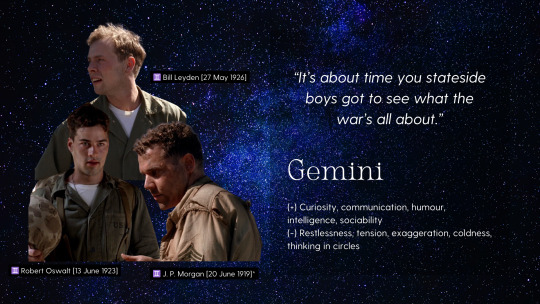
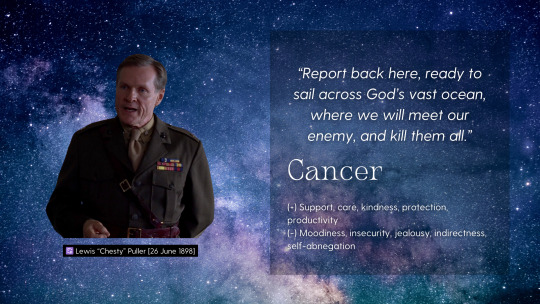
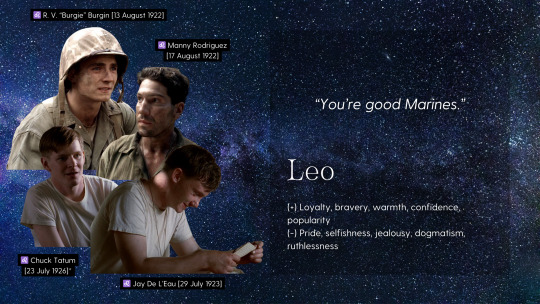
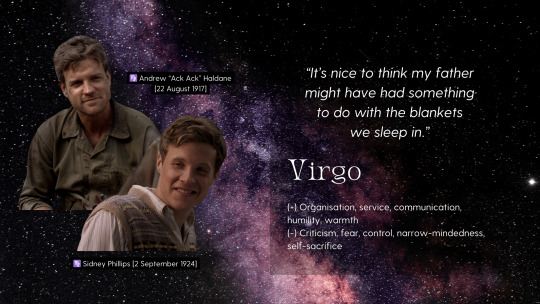

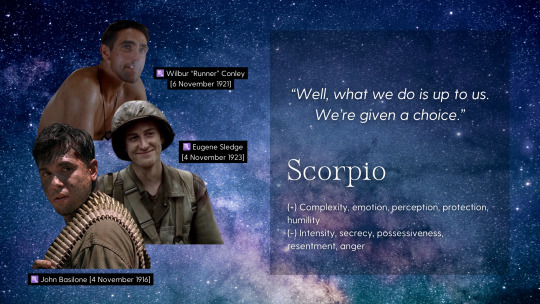
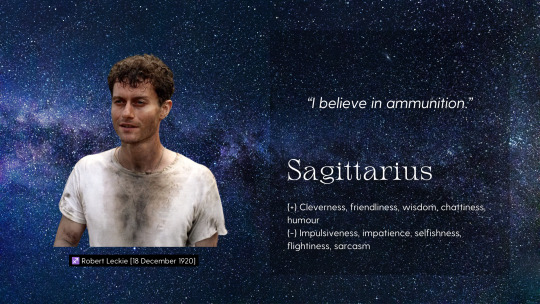
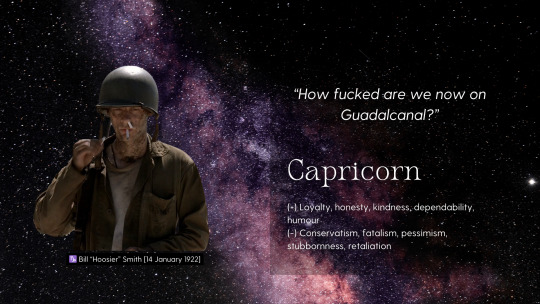
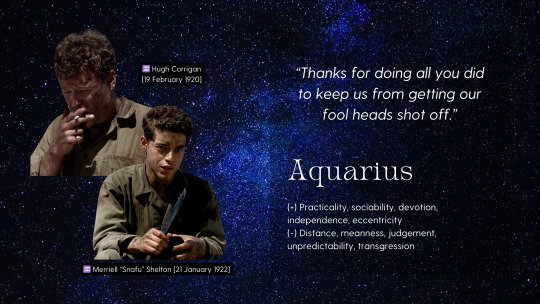


BOBSTROLOGY 2: THE PACIFIC BOOGALOO
Another completely serious presentation by @pegasusdrawnchariots and oatflatwhite
written version under the cut!
♈️ Edward “Hillbilly” Jones – 1 April 1917 ♈️ Elmo “Gunny” Haney – ?? April 1898 * ♉️ Clifford "Steve" Evanson – 25 April 1926 ♊️ Bill Leyden – 27 May 1926 ♊️ Robert Oswalt – 13 June 1923 ♊️ J. P. Morgan – 20 June 1919 * ♋️ Lewis “Chesty” Puller – 26 June 1898 ♌️ Chuck Tatum – 23 July 1926 * ♌️ Jay De L’Eau – 29 July 1923 ♌️ R. V. "Burgie" Burgin – 13 August 1922 ♌️ Manny Rodriguez – 17 August 1922 ♍️ Andrew “Ack Ack” Haldane – 22 August 1917 ♍️ Sidney Phillips – 2 September 1924 ♎️ Vera Keller – 13 October 1923 ♎️ Lew “Chuckler” Juergens – 22 October 1918 ♏️ John Basilone – 4 November 1916 ♏️ Eugene Sledge – 4 November 1923 ♏️ Wilbur “Runner” Conley – 6 November 1921 ♐️ Robert Leckie – 18 December 1920 ♑️ Bill “Hoosier” Smith – 14 January 1922 ♒️ Merriel “Snafu” Shelton – 21 January 1922 ♒️ Hugh Corrigan – 19 February 1920 ♓️ Lena Riggi Basilone – 7 March 1913
2 Aries 1 Taurus 3 Gemini 🥈 1 Cancer 4 Leo 🥇 2 Virgo 2 Libra 3 Scorpio 🥈 1 Sagittarius 1 Capricorn 2 Aquarius 1 Pisces
7 🔥 4 🪨 7 💨 5 💧
6 cardinal 10 fixed 7 mutable
14 masculine 9 feminine
* Gunny Haney's day of birth is not known; we went with Aries on vibes * J. P. Morgan's birthday was taken from The Pacific wiki but we couldn't verify it elsewhere (or whether he was actually a real dude?) * Chuck Tatum is a cusp and we assigned him Leo based on his city of birth if he had been born at noon; also on vibes
** Other characters in The Pacific are based on people from Leckie and Sledge's memoirs, but their names are either changed or they are only referred to by surname and quite unidentifiable, based on my (oatflatwhite's) original search (which was not exhaustive!). Ronnie Gibson and Stella Karamanlis, for example, seem to be based off of real people Leckie encountered during the war, but were not their actual names. Others, like minor officers in both K and H companies, and the doctors Leckie sees, I just couldn't track down. We could locate the birthdays of Sledge's family (brother and parents) but since we couldn't do the same for Leckie and Basilone, we left them off this list. They're two more Scorpios and another Virgo, by the way.
*** And if you've read this far, @pegasusdrawnchariots assigned Stella Leo based on vibes :-)
#the pacific#hbo war#thepacificedit#hbowaredit#bobstrology#liz makes things#robert leckie#eugene sledge#john basilone#et cetera et cetera#phew what an undertaking
88 notes
·
View notes
Text
MCU Timeline: Captain America: The First Avenger
March 10, 1917 - James Buchanan Barnes is born.
August 15, 1917 - Howard Anthony Stark is born.

July 4, 1918 - Steven Grant Rogers is born.
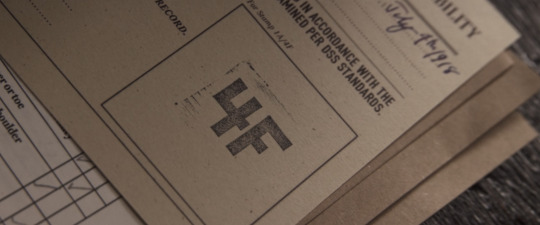
April 9, 1919 - Margaret "Peggy" Carter is born.
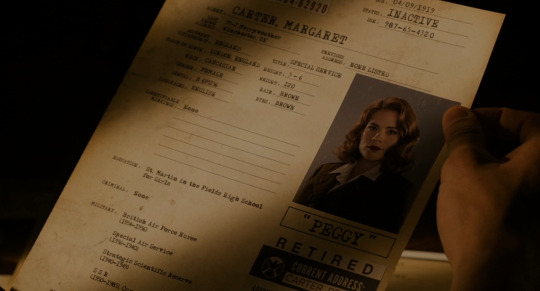
Why 1919 (deleted scene from The Avengers) and not 1921 (Agents of S.H.I.E.L.D.), as stated in Wikipedia: Agents of S.H.I.E.L.D. is not canon for the MCU (events of the show take place in another universe, where Peggy was born in a different year and had a different background).
1934-1936 - young Peggy serves as a nurse in the British Air Force.
1936-1940 - Peggy serves in the Special Air Service.
1940:
Peggy joins the Strategic Scientific Reserve.
Howard founds Stark Industries and becomes its CEO.
May 1941 - Steven Rogers attends a Dodgers vs The Phillies baseball game at Ebbets Field, Brooklyn.
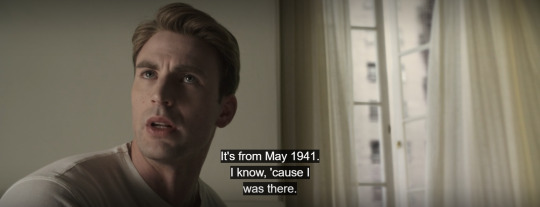
March 1942 - Red Skull invades Norway and extracts the Tesseract.
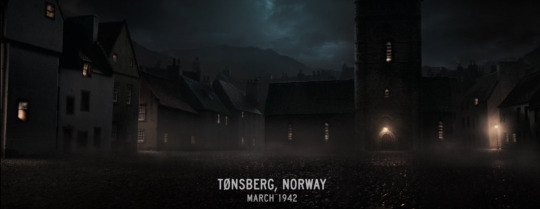
1942/1943 - The Allies receive a gift from Wakanda: Vibranium. It is given to the SSR's Head Engineer - Howard Stark.
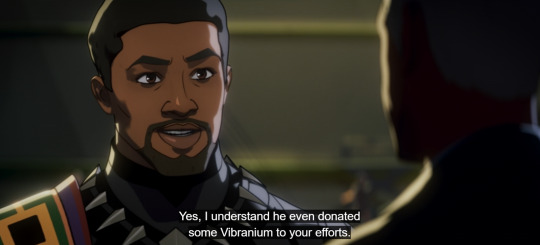
1943:
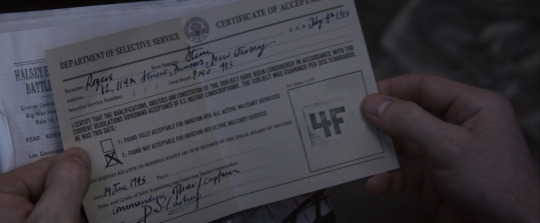
June 14:
13:50 - Steve gets his last 4F.

And his last beating in the alley a couple of hours later.
Evening - he and Bucky go to the "World Exposition of Tomorrow", where Howard demonstrates his (almost) flying car. Steve meets Dr. Erskine and gets a (falsified) 1A.
June 15:
Sergeant James Barnes heads to Europe with the 107th Infantry Regiment.
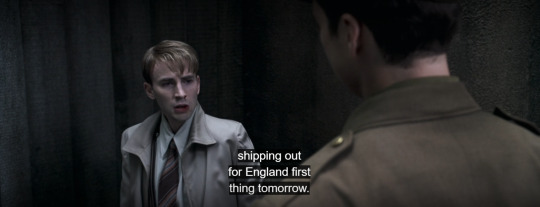
Candidate Rogers begins his trial week for Project Rebirth at Camp Lehigh in NJ.

June 21 - Dr. Erskine makes his choice and informs Rogers. They talk about it, about the serum and HYDRA.
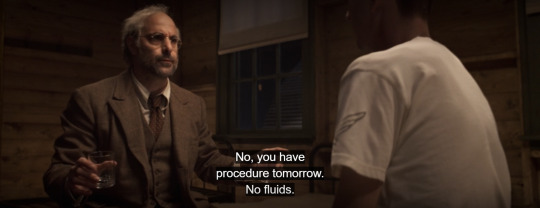
June 22, morning - Steve becomes a super soldier. Erskine is killed. The last vial of serum is destroyed.
June 23:
Rogers is offered a position in the USO theater (to help sell war bonds) and receives a (fake) rank of captain.
Night - SSR (including Peggy and Howard) is being retasked to fight HYDRA and goes to London, UK.

July-October - Captain America's US tour (over 200 performances).
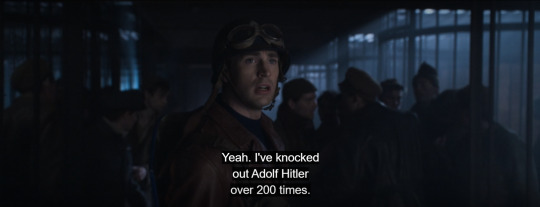
November 3rd:
Captain America show in Italy.

Night - Steve goes behind the lines to a HYDRA camp in Austria to rescue Bucky with the help of Peggy and Howard.
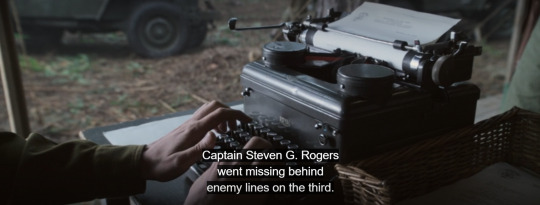
November 5th - he returns with 400 (CATFA) or 163 (CATWS) liberated soldiers.
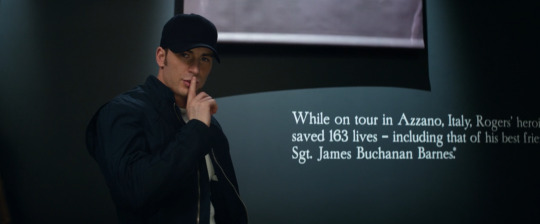
A couple of days later - SSR in London. Based on the locations of HYDRA bases remembered by Rogers, they develop a plan to combat HYDRA. Steve puts together a team.
Marvel Studios' mistake: the medals and badges Steve wears don't make any sense at this particular moment. He simply had neither the time nor the opportunity to earn the Combat Infantry Badge, or the Presidential Unit Citation Badge, nor could he receive the American Defense Service Medal.

Next day, 8 am- Steve meets with Howard and receives his vibranium shield.
1944:
November 1943 - November 1944 - Howling Commandos destroy HYDRA weapons factories.

December 1944 - January 1945 - attack on the train with Dr. Zola. Bucky falls from the train from a great height and is declared killed in action. Zola is captured.

1945:
Soon after, early January - the Valkyrie is finished and ready to attack major US cities. SSR receives information about the location of HYDRA's main base in the Alps and heads there.
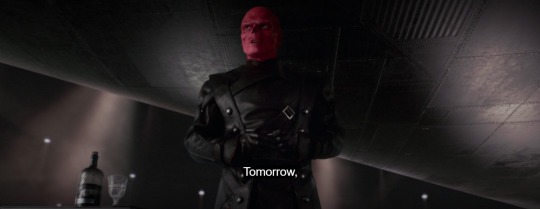

Next day - SSR attacks HYDRA's main base. Red Skull teleports to Vormir. The Tesseract is lost in the Arctic Ocean. Crash of the Valkyrie. Steve goes into suspended animation.
After January 1945 - Howard Stark leads expeditions to find Rogers. He finds the Tesseract, but not Captain.
March 23, 1945 - Case №17 is opened. James Barnes "joined" the HYDRA branch in the USSR.

May 8, 1945 - VE-Day.
Spring-Summer 1945 - Howard is involved in the Manhattan Project.
1946:
December 1945/January 1946 - Peggy is assigned to the SSR office in New York.

March 1946 - events of "Agent Carter" one-shot.
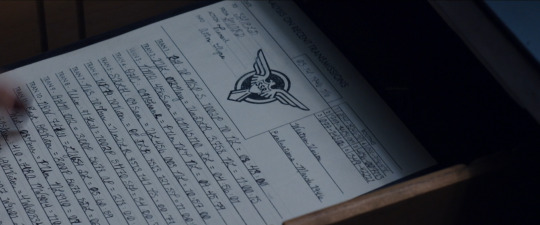
2012:
Early 2012 - 67 years later, Steve Rogers is found frozen but alive.
April 2012 - Rogers wakes up in the S.H.I.E.L.D. recovery room in New York City.
Iron Man (2008) Timeline
The Incredible Hulk (2008) Timeline
Iron Man 2 (2010) Timeline
Thor (2011) Timeline
The Avengers (2012) Timeline
#marvel#mcu#steve rogers#captain america#bucky barnes#james barnes#mcu timeline#captain america the first avenger#captain america the winter soldier#agent carter#peggy carter#howard stark
95 notes
·
View notes
Text
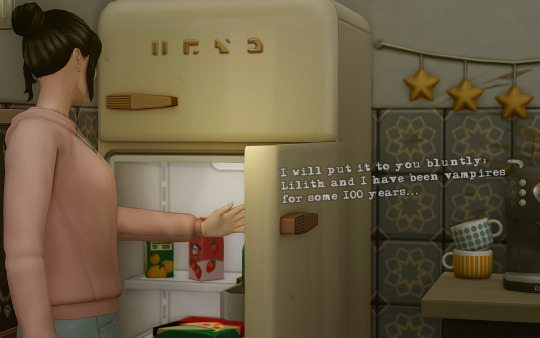

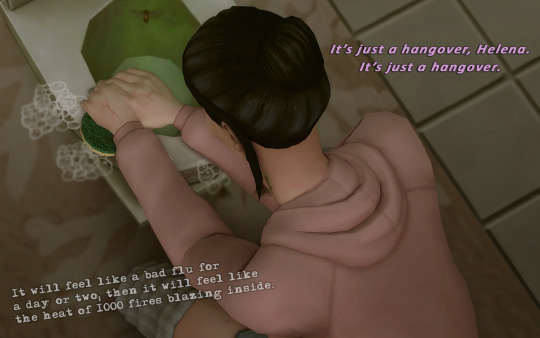
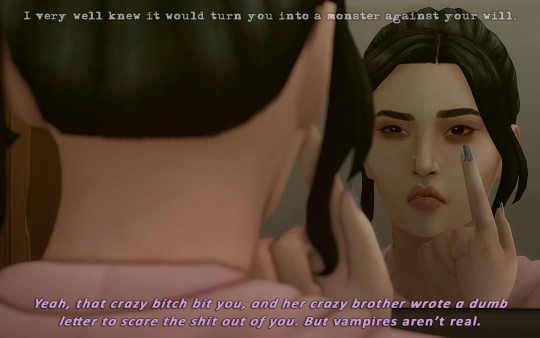

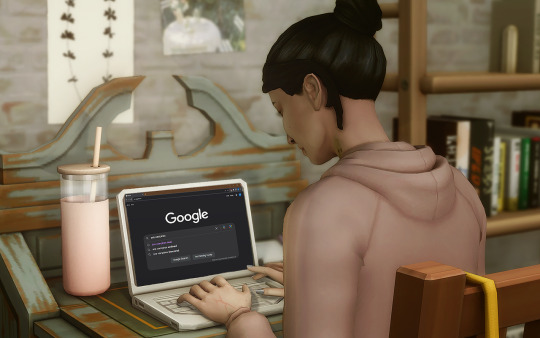
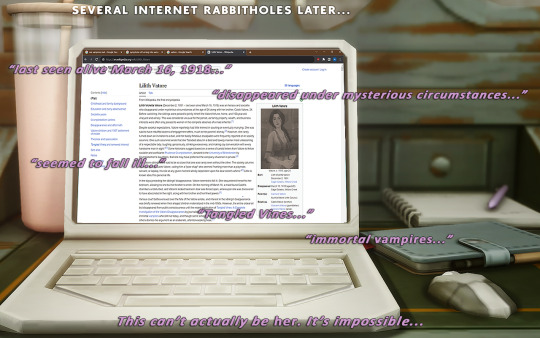
That moment you find out the girl you’ve been seeing is famous - for being a 130-year-old missing persons case with an entire "theories and speculation" section on Wikipedia.
Previous / Next
Yes, I made Lilith a Wikipedia page because I'm just that extra. If you want to read it (I threw in some new information), you can find the whole thing following the transcript below the cut.
Real-time footage of Helena researching:

[Snippets of Caleb's letter echo in Helena's mind] I will put it to you bluntly: Lilith and I have been vampires for some 100 years. Faced with your otherwise certain demise, I chose to make you one too. You may not believe me. It will feel like a bad flu for a day or two; then it will feel like the heat of 1000 fires blazing inside. I very well knew it would turn you into a monster against your will.
Helena, thinking: It's just a hangover, Helena. It's just a hangover. Yeah, that crazy bitch bit you, and her crazy brother wrote a dumb letter to scare the shit out of you. But vampires aren't real.
Thank god Ulrike left all these fucking tarps. This sunlight is murder on my eyes.
Several internet rabbitholes later... [Helena scanning Wikipedia page on computer screen] Last seen alive March 16, 1918... disappeared under mysterious circumstances... seemed to fall ill... Tangled Vines... immortal vampires... This can't actually be her. It's impossible...

Lilith Violetta Vatore (December 2, 1891 – last seen alive March 16, 1918) was an heiress and socialite who disappeared under mysterious circumstances at the age of 26 along with her brother, Caleb Vatore, 24. Before vanishing, the siblings were poised to jointly inherit the Vatore fortune, home, and 100-year-old vineyard and winery. This was considered unusual for the period, as family property, wealth, and business interests were often only passed to women in the complete absence of a male inheritor.
Despite societal expectations, Vatore reportedly had little interest in courting or eventually marrying. She was said to have rebuffed dozens of engagement offers, much to her parents' dismay. However, she rarely turned down an invitation to a ball, and her baldly flirtatious escapades were frequently reported on in society columns. One such columnist wrote that she "bandied about in a bold and bawdy manner most unbecoming of a respectable lady, laughing uproariously, drinking excessively, and making coy conversation with every handsome man in sight." Some historians suggest based on a series of candid letters from Vatore to fellow socialite and confidante Prudence Crumplebottom, donated to the University of Britechester by Crumplebottom's daughters, that she may have preferred the company of women in private.
The Vatore siblings were said to be so close that one was rarely seen without the other. The society columns were not kind to Caleb Vatore, calling him a "poor chap" who seemed "nothing more than a playmate, servant, or lapdop, his role at any given moment wholly dependent upon his dear sister's whims." Little is known about his personal life.
In the days preceding the siblings' disappearance, Vatore seemed to fall ill. She sequestered herself to her bedroom, allowing no one but her brother to enter. On the morning of March 16, a maid found Caleb's chambers undisturbed, and Vatore's locked bedroom door was forced open, whereupon she was discovered to have absconded in the night, along with her brother and her finest jewels.
Various court battles ensued over the fate of the Vatore estate, and interest in the siblings' disappearance was briefly renewed when their alleged children materialized in the mid-1950s. However, the entire ordeal all but disappeared from public consciousness until the recent publication of Tangled Vines: A Complete Investigation of the Vatore Disappearances by journalist Salim Benali. Benali posits that the Vatores are immortal vampires who still live today, and though some scholars find elements of his research intriguing, others dismiss his argument as an elaborate, attention-seeking hoax.
#ts4#sims 4#sims 4 story#ts4 story#simblr#helena zhao#story: hzid#as unbelievable as it may be i love the idea of the vatores being minor historical figures who should be long dead hiding in plain sight#helena probably should've done this before the party and saved herself the trouble#but to be fair i don't think she knew lilith's last name
190 notes
·
View notes
Text

Liberty Leading the People (1830) 🎨 Eugene Delacroix 🏛️ The Louvre 📍 Paris, France
Perhaps Delacroix’s most influential and most recognizable paintings, Liberty Leading the People was created to commemorate the July Revolution of 1830, which removed Charles X of France from power. Delacroix wrote in a letter to his brother that a bad mood that had been hold of him was lifting due to the painting on which he was embarking (the Liberty painting), and that if he could not fight for his country then at least he would paint for it. The French government bought the painting in 1831, with plans to hang it in the room of the new king Louis-Philippe, but it was soon taken down for its revolutionary content. Lady Liberty was eventually the model for the Statue of Liberty, which was given to the United States 50 years later, and has also been featured on the French banknote.
Peint de septembre à décembre 1830 dans l'atelier loué par Eugène Delacroix au 15 (actuel n°17 ?) quai Voltaire, à Paris ; envisagé pour la deuxième Exposition au profit des blessés de Juillet 1830, galerie de la Chambre des Pairs (palais du Luxembourg), Paris, janvier 1831 (n° 508 du livret sous le titre "Une Barricade"), en réalité non prêté ; admis par le jury le 13 avril 1831 et exposé au Salon de 1831 (ouvert du 1er mai au 15 août), Paris, Musée royal (Louvre), n° 511 du livret sous le titre "Le 28 juillet. La liberté guidant le peuple" (n° 1380 du registre d'entrée des ouvrages au Salon, sous le titre "La Liberté guidant le peuple au 29 juillet" [sic], aux dimensions de "293 x 358 cm" cadre compris) ; envisagé comme achat de la Liste civile du roi Louis-Philippe Ier, en juillet 1831, au prix de 2 000 francs, finalement acheté à l'artiste par le ministère du Commerce et des Travaux publics en août 1831, au prix de 3 000 francs (en remplacement de la commande à Delacroix, au même prix, d'un tableau d'histoire ayant pour sujet "Le roi Louis-Philippe Ier visitant la chaumière où il logea près de Valmy, le 8 juin 1831", annulée suite au désistement de Delacroix) ; présenté au musée du Luxembourg, Paris, en 1832 et en 1833 (n° 160 du supplément au catalogue du musée) ; mis en réserve vers 1833-1834 ; confié à l'artiste vers 1839 qui le met en dépôt au domicile de sa tante, Félicité Riesener, et de son cousin Léon Riesener, à Frépillon (Val-d'Oise) ; réclamé à l'artiste par la direction des Musées nationaux (ministère de l'Intérieur) en mars 1848 (Delacroix demande à cette occasion une augmentation du prix de 7 000 francs, soit un total de 10 000 francs ; cette augmentation lui est refusée) ; prêté par Delacroix au peintre et entrepreneur lyonnais Alphonse Jame entre mai 1848 et mars 1849, en vue d'être exposé à Lyon, contre 1000 francs (payés en deux versements de 500 francs, le 11 septembre 1849 et le 8 mars 1850) ; rentré à Paris et restitué à l'administration en mars 1849 ; possiblement présenté au musée du Luxembourg, Paris, à partir de juin 1849 jusqu'en 1850 (mais absent du catalogue du musée) ; mis en réserve dans les magasins du musée du Louvre de 1850 à 1855 ; présenté à l'Exposition universelle, Palais de l'Industrie et des Beaux-arts, Paris, 1855, n° 2926 du livret ; mis en réserve dans les magasins des Musées impériaux de 1856 à 1863 ; présenté au musée du Luxembourg, Paris, de 1863 à 1874 ; déplacé du musée du Luxembourg au musée du Louvre en novembre 1874 ; inventorié pour la première fois, sous le n° "R.F. 129", en 1875 et présenté à partir de cette date dans la salle des États au musée du Louvre ; mis en sécurité pendant la Première Guerre mondiale au couvent des Jacobins, à Toulouse (Haute-Garonne) de 1914 à 1918 ; restauré par Lucien Aubert (nettoyage et réintégration de la couche picturale) à Paris en 1920 ; mis en sécurité pendant la Seconde Guerre mondiale au château de Chambord (Loir-et-Cher) en 1939, puis déplacé au château de Sourches, Saint-Symphorien (Sarthe), le 29 septembre 1943 ; rentré du château de Sourches au musée du Louvre, Paris, le 16 juin 1945 ; restauré par Raymond Lepage et Paul Maridat (rentoilage) et par Georges Zezzos (allègement et réintégration de la couche picturale), au musée du Louvre durant l'été 1949 ; présenté au musée du Louvre dans la salle Mollien d'octobre 1949 à 1969, puis en salle Daru de juin 1969 à juin 1994, puis en salle Mollien depuis décembre 1995 ; restauré par David Cueco et Claire Bergeaud (remplacement du châssis, pose de bandes de tension sur les bords de la toile) au musée du Louvre en janvier-février 1999 ; restauré par Bénédicte Trémolières et Laurence Mugniot (nettoyage et réintégration de la couche picturale) au musée du Louvre, d'octobre 2023 à avril 2024.
#Liberty Leading the People#Eugene Delacroix#Romanticism#1830#oil on canvas#painting#oil painting#The Louvre#Paris#France#Musée du Louvre#La Liberté guidant le peuple#french#art#artwork#art history
65 notes
·
View notes
Text
so doikayt (“hereness” in yiddish) is broadly taken to mean “diasporism.” you may have seen this guy

from a bundist poster. it’s broadly taken as jewish opposition to political zionism in the modern age (the poster is from 1918. ashkenazim had very different ideas about the best way to combat antisemitism).
any doikayt for the modern world has to contend with two things: 1) the history of the places we live, wherever we are (USAmerican jews especially need to recognize that living in the states does not confer moral authority re: settler colonialism) and 2) “wherever we live is our homeland” applies to wherever we live.
(this is not a defense of the actions of the state of israel and if you act up i’m turning off reblogs).
174 notes
·
View notes
Note
Hey babe, wanna hear something hot? *whispers* history of metformin
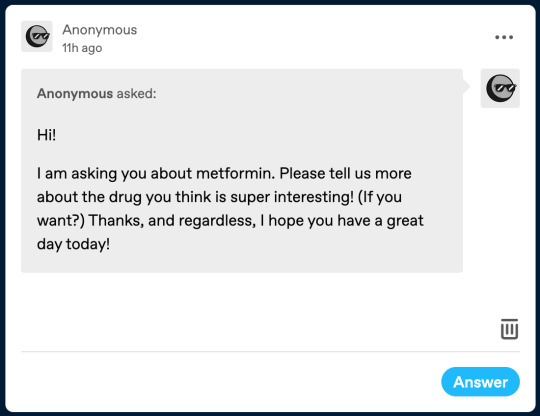
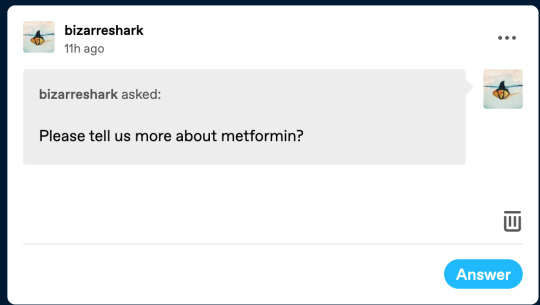
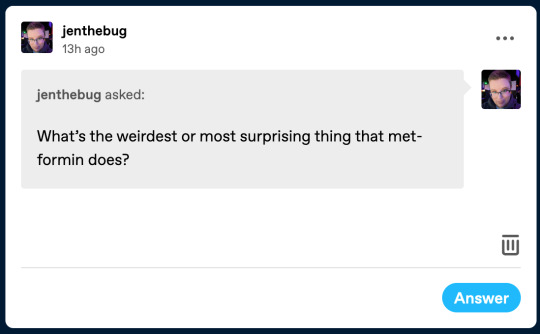

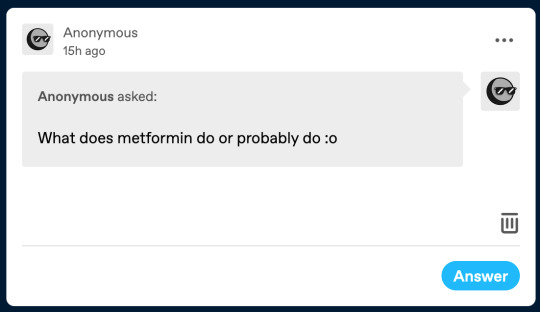
Ok okay I'll talk
So metformin is commonly thought of as the most boring of diabetes drugs. Like, everyone who has ever thought about maybe having type 2 diabetes is taking it unless it gives them diarrhea, and even then their doctor still probably wants them to take it. But it's a first line because it's old, it's cheap, it doesn't often cause hypoglycemia, and it has relatively few side effects compared to other diabetes drugs. Also, like a lot of older drugs, it does way more than it says on the packaging. And a lot of stuff we're still learning about.
In order to talk about metformin, we have to talk about a plant called goat's rue. Goat's rue is a plant native to Europe, Africa, and Asia, and currently grows just about everywhere. In ancient times it was used as an anti-parasitic, a plague remedy, and to relieve the excessive urination caused by what might have been diabetes. In 1918 it was found to contain a chemical called galegine, which did lower blood sugar. Galegine as an anti-diabetes medication is probably too toxic to use long term. However, with a few chemical tweaks, it could become a drug that lowered blood sugar without the toxic effects. Metformin was born.
Metformin came out in 1923 and is a type of drug called a biguanide. it's actually the only type in it's class still available as an anti-diabetic agent, because the other drugs in it's class that came out in the 1920s and 30s caused lactic acidosis and liver problems (similar to the types of reactions seen with galegine), and were taken off the market.
Metformin (and pretty much all oral antidiabetic agents in development at this time) didn't do well initially, probably because they came out the same decade as insulin, and insulin was a lot more effective at treating any kind of diabetes.
It fell out of use extremely quickly, and didn't get picked up again until the 1940s, when US access to antimalarial drugs was cut off, just as a war in the pacific was ramping up. Metformin was evaluated as an antimalarial during WWII, and while noted to have some anti-malarial properties (particularly as a malaria preventative) it also was noted to significantly lower blood sugar in diabetic patients- while not lowering blood sugar very much at all in non-diabetic patients.
This effect, rather than it's antimalarial properties, was what got scientists really interested. Unfortunately, it would not be until 1957 in France that metformin had its first major studies to determine that it did, indeed, work against diabetes. Metformin lost the race to the "first" (successful) oral antidiabetic agent by a year, to a different drug that was found while looking for a new antibiotic- Diabenese.
Metformin became a commercial success in France, while Diabenese became successful in the United States. Metformin would actually not be approved for use in the US until 1995.
But now we get to talk about what metformin does and why it's so freaking cool.
Type 2 Diabetes- lowers A1C (a measure of blood sugar control) by 1-2 full points
Prevents/reverses weight gain due to antipsychotics
Prevents and treats malaria
Makes the flu shot work better
Decreases severity of respiratory illness and complications related to the flu
Changes gut microbiome for the better
Regulates periods and reduces other symptoms in people with PCOS
Lowers risk of breast, colon, and prostate cancer
Lowers risk of dementia
Lowers risk of stroke
May increase lifespan
128 notes
·
View notes
Text
Look maybe the fandom has talked about this before but I was a literal child when the fandom was born so I'm gonna talk about it now. Childhood is temporary but fandom is forever (no it's not)
Peggy Carter's birthday on the MCU wiki is listed as April 8, 1921. Based on some speculative timelines, we can determine that the events of Captain America: The First Avenger span from approximately June 1943 to March 1945, so Peggy would have been between the ages of 22 years 2 months and 23 years 11 months.
Agent Carter season 1 takes place in April/May 1946, which we know because the season finale happens on the first anniversary of V-E Day on May 8. It's not entirely clear how many days pass over the course of the season (unless it is and I'm just not dedicated enough), but given that episodes 5-8 seem to happen over the course of about 50 hours, it seems safe to say it's about a week to ten days. This means Peggy is 25 years 1 month old at the end of the season.
However, in S01E01 "The Iron Ceiling" Daniel looks at Peggy's file to cross-reference an injury she received with the ones in the photos of the blonde at the club, who is of course Peggy in disguise. The incident report shows her age at the time of the injury as 26 years 11 months old.
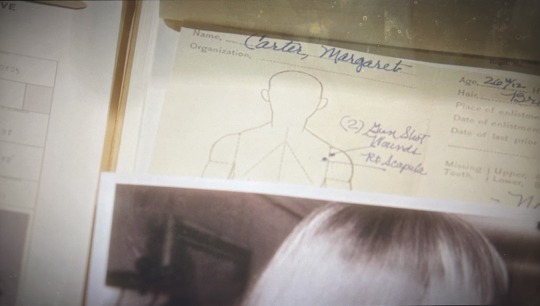
(ignore the fact that I took a picture of my laptop with my phone, the top right corner has her age)
These means one of a few things is possible. The first is that the show got her age wrong on accident, either because they didn't know her birthday or they didn't scrutinize the timeline like a fandom does, which is very likely but boring. Second is that it's possible her birthday was made canon after the show, which is also possible and boring. Another possibility is that the MCU wiki has her birthdate wrong, stating that she is younger than canon says she is, which seems unlikely to me and is also a boring explanation.
The most fun and most headcanon-y explanation is that she really was born in 1921 but she, for whatever reason, lied about her age and said she was born in 1918, making her 28 years 1 month old at the time of the first season.
1918 seems the most logical year because the show implies Daniel doesn't know about the injury, but it is established that the two have known each other for six months. If she was 27 at the time of the show the injury would be two months old and Daniel would likely know about it. Additionally, the wound appears as healed scars, meaning it has been healed for some time, likely longer than two months.
Assuming she only lied about her birth year and not the actual day, a birth year of 1918 places the injury in March 1945, which makes logical sense with the timeline of CA:TFA, placing the event in the approximately two weeks between Cap going in the ice and her birthday.
1918 also makes sense because, assuming she got involved with S.O.E. in 1940 like the show depicts, she would have been about 19 pretending to be 22. If she had lied and said she was much older, it seems likely she would have been caught in the lie. Additionally, Steve was born in 1918, Bucky and Howard in 1917, and Daniel and Jack sometime in 1918 or 1919 (the wiki is vague for both of them), so her supposed age would be consistent with the ages of the people she worked with.
I personally headcanon that she was born in 1921 and lied that she was born in 1918. I also headcanon that Michael was born in 1918 and they used the same year as if they were twins, which has far less basis in canon and is more of a little treat for me.
If anyone has insight/proof of some other alternative/theories/headcanons, let me know because I would love to hear!
#thank you for coming to my tedtalk#im just a silly girl obsessed with her silly show#agent carter#peggy carter
19 notes
·
View notes
Text
TIPS FOR WRITING COMBAT, TACTICS, AND / OR FIELD MEDICINE SCENARIOS PT. 2
Hello again! Coming out of the woodwork with my niche interests and hoping to pass along some information about writing things such as combat, tactical operations, and / or field medicine!
Disclaimer: I am not a medical professional, nor am I someone who has served in the military or law enforcement in any capacity. Any information in this post is gained from personal research in mostly internet circles. Some topics may be unsettling/disturbing, so please take care in reading.
You can view part one of this post [HERE].
Note: This part will be written more in-depth, as the sources I've pulled from are either no longer accessible, or from narrators I would not feel comfortable platforming due to their motives for sharing this information (e.g., anti-human rights individuals with qualified backgrounds). Knowledge is power, but we don't have to platform fascists in order to share it (* ^ ω ^)
To start this post off, I'll share some archives I've found since part one! This way, if you're just looking for resources and don't want to read something super lengthy, this post is still (hopefully) useful to my fellow writers.
Safety Data Sheets [Archive] - A collection of safety data sheets for what looks like various types of compounds, mostly based around industrial work (e.g., concrete mixes, roof coatings, etc.). While arguably not relevant to this sort of topic focus, I think it could be in the right scenarios, especially as sheets provide first-aid instructions, hazard classification, and details about specific compounds.
War Medicine [Archive] - Definitely a more historical reference (dated 1918), but published by the American Red Cross Society in France covering… war medicine. Includes various diagrams and topics.
Field Manuals and Technical Manuals [Archive] - A collection of field and technical manuals from various military services spanning across various decades. I believe most of these are U.S.-based.
Now, for the in-depth written information, placed behind the "keep reading" button.
CLOSE-QUARTERS BATTLE (CQB) / MILITARY OPERATIONS IN URBAN TERRAIN (MOUT)
CQB is typically defined as a short duration, high intensity conflict characterized by sudden violence at close range. MOUT is an example of a scenario where CQB may be applicable.
When in these environments, it's important for your character(s) to know how to navigate them. The presence of closer-knit buildings, various entryways, and populated environments means there's a lot of risk for both them and those around them.
As such, one of the founding concepts is entry and clearance.
There are many different ways to enter and clear rooms within a building, but the three primary types are as follows:
Conventional (aka: Strong Walling) - The leading individual "commits" to the room by stepping in with their full body, pressing their back to the wall opposite to the door's attachment, and using their upper torso to sweep the room with their light/weapon.
Lateral - The leading individual enters the room at either a 90-degree angle to the door (straight toward back wall of room) or a 45-degree angle (toward the corner opposite to the door).
Framing - Rather than step into the room, the leading individual peeks around the door frame and conducts their sweep from within it (think of them as using the door frame as a "mount" for their weapon, if they have one).
These can be conducted solo, or with a wingman.
A wingman is usually one other individual who stacks beside the leading individual, and uses an over-the-shoulder vantage to provide a secondary set of eyes for cover, while also being able to cover tasks such as opening doors.
Then, there's navigating environments as teams. With teams, there comes a need to develop tactics. With CQB in particular, there are two primary types of strategies:
Dynamic - Rapid movement and clearance; Your character(s) are likely in a high-intensity/time-sensitive scenario where speed is more important than safety. In these scenarios, your character(s) is/are more likely to clear rooms by committing with their entry and flooding in if in a team.
Deliberate - Slower movement and clearance; Your character(s) are likely still in dire circumstance, but they're able to take the time and prioritize safety over speed. In these scenarios, your character(s) is/are more likely to clear rooms by framing and entering one at a time to ensure all angles are covered.
But not every room is a perfect rectangle with wider-open spaces. Regardless of the structure, dead space is an important factor to consider for characters both outside and within these environments.
Dead space simply refers to the space that has not been cleared by the individual(s) entering the space. There are a few different types, including:
Anchored - The object creating the dead space is anchored to a wall, and thus prevents flanking. This could be a dividing wall, and certain types of cabinetry or other furniture.
Unanchored - The object creating the dead space is not anchored to a wall, and thus allows for flanking. This can be… any piece of furniture, crates/boxes/shelves, even certain installation pieces such as a 360-fireplace or showcase tank/terrarium.
Low - The object creating the dead space cannot fully conceal an individual/individuals who are standing, but could if they were crouched or laying prone. This could be things such as couches, tables with cloth over them, etc.
High - The object creating the dead space is elevated above the entry point. This usually, and pretty much only, includes things like stairwells, but it could include higher cabinetry if your character(s) is/are creative enough or able to navigate that.
Moving away from specific scenarios, there is something I've seen written a lot in fanfic and in rp spaces that I think would be important to clarify:
Do. not. attempt. to. catch. a. falling. gun.
I'm serious! In active combat, this isn't as applicable because your character's goal is (ultimately) to neutralize whatever threat is in front of them. Beyond that, though, your character(s) should never attempt to catch.
"But why? Wouldn't you want to stop it from discharging?"
That is why.
Yes, the firearm may discharge when hitting the ground… but in catching it, your character(s) may also discharge it. Unless they know for a fact they will not grab the area around or within the trigger guard, it's highly likely that a finger/fingers will slip into the guard and, due to the force of the catch, end up pulling.
The best practice, especially for a character/characters who are skilled with firearms and versed in safety practices, is to put the hands up and let it fall. Step back, find cover if possible, and retrieve the firearm after it has landed.
And again, I am not responsible for what y'all do with this info. Read responsibly, and stay frosty!
50 notes
·
View notes
Text

On the image: from the left to right Tatyana Nikolaevna and example of her hair colour; Anastasia Nikoalevna and example of her hair; Maria Nikolaevna and example of her hair: and Olga Nikolaevna and example of her hair.
The Mystery of the Grand Duchesses' Hair
Almost a year ago, when I started looking into the circumstances of the Nicolas II and his family 'murder' or rather disappearance, I noticed a certain detail that caught my attention - the box with four types of hair found in the Ipatievsky House on 2 August 1918 by the investigator Nametkin.
[…] a box with the hair of four colours, belonging, as per words of the present Terenti Ivanovich Chemodurov, to the former Grand Duchesses: Tatyana, Olga, Maria, and Anastasia Nikolaevna. […] - from the report produced by the investigator Nametkin on 2 August 1918.
This 'evidence' caught my attention because something seemed very odd about the finding.
Nametkin noted that the hair was of the four colours. This means that the hair in the panniers was long enough to identify the colours, as if it had been short then it simply would have mixed together and it would have been difficult to distinguish the types.
2. The Grand Duchesses had very similar to each other hair colour (see the image) and if their hair was mixed in one box it would be difficult to distinguish their colours. So, it means that the colours of the hair differed enough to distinguish them.
3. The Grand Duchesses could not have had too long hair in July 1918, as in July 1917 they shaved their heads. The hair grows slowly - approximately 1 cm per month, and even it it was 2 cm per month, by July 1918 they would have their hair no longer than slightly above their shoulders or even shorter. The point here is - there was no need to cut the hair even shorter. If it was done there was a reason for that.
4. Nowhere in the diaries of Nicolas II or Alexandra Fedorovna it is mentioned that the hair of their daughters was 'trimmed' in July 1918.
5. The priest who came to do the service couple of days before 16 July 1918 confirmed that the hair of the Grand Duchesses was slightly above their shoulders. This means that their hair was not cut. But if so, then why to cut it on the 16 July 1918?
6. Chemodurov was not in Ipatievsky House in May-July 1918 as Nicolas II let him go and kept Trupps as his valet instead. So he could not have known how long the hair of the Grand Duchesses was in the months of his absence.
7. Chemodurov in a conversation with Gibbs admitted that he did not tell the truth to the investigators as he wanted to make sure that the Family was safe.
Now the question is 'Whose hair was found in the box and why these four people needed to cut their hair?'
The hair colour of the Grand Duchesses was reconstructed based on the testimony of A. A. Tegleva given on 5-6 July 1919 to the investigator Sokolov.
#romanovs#research#seraphima bogomolova#investigation#nicolas ii#evidence#murder mystery#OTMA#Ipatievsky House
40 notes
·
View notes
Photo

The German invasion & occupation of Northern France, 1870-1871
« Grand atlas de l’histoire de France », Autrement, 2011
via cartesdhistoire
65 notes
·
View notes
Text








Marilyn Monroe’s family.
Gladys Pearl Monroe was Marilyn’s mother. At age 15, Gladys had married John Newton Baker, an abusive man nine years her senior. They had two children together, Robert and Berniece.
Gladys’ second marriage occurred in 1924 when she married Martin Edward Mortensen. In 1926 she gave birth to Norma Jeane, (Marilyn)
Gladys told Marilyn that her father was one of her co-workers (and her superior) at RKO Studios—a man named Charles Stanley Gifford.
Marilyn sought out Charles Stanley Gifford and told him who she was, only for him to respond: “I’m married, and I have a family. I don’t have anything to say to you. Call my lawyer”
In 2022, a scientists performed a DNA test on a strand of Marilyn’s hair and a cheek swab from one of Charles’ great-grandchildren, which confirmed that Charles was Marilyn’s father.
Marilyn also had two other half-siblings from Gifford’s marriage with his first wife, a sister, Doris Elizabeth (1920–1933), and a brother, Charles Stanley Jr. (1922–2015).
Gladys, who had long suffered from mental illness, lived most of her life from 1934 until 1967 in psychiatric facilities.
She went on to live with her daughter Berniece, and moved into a retirement home in Gainesville, Florida, where she died on March 11, 1984
Marilyn’s father, Charles Stanley Gifford (1898-1965)
Marilyn’s mother, Gladys Pearl Monroe (May 27, 1902 – March 11, 1984)
Marilyn’s half brother, Robert Kermitt Baker (January 16, 1918. August 16, 1933) He died of kidney failure as a result of the tuberculosis
Marilyn’s half sister, Berniece Inez Gladys Miracle (July 30, 1919 – May 25, 2014)
Marilyn’s niece, Mona Rae Miracle, was born on July 18, 1939.
Photo 1- Berniece at 75 years old, 1994
Photo 2- Marilyn as a baby
Photo 3- Gladys and Norma Jeane
Photo 4- Gladys
Photo 5- Marilyn’s half brother Robert.
Photo 6- Berniece, Gladys, Marilyn
Photo 7- Berniece, Marilyn with her niece Mona and Gladys
Photo 8- Stanley, Marilyn’s father
Photo 9- Stanley Jr. Marilyn’s half brother, her father’s son.
Photo 10- Gladys
39 notes
·
View notes
Text














BOBSTROLOGY
A completely serious presentation by @pegasusdrawnchariots and oatflatwhite
written version under the cut!
♈️Patrick O’Keefe [April 3 1926] ♈️Robert Sink [April 3 1905] ♈️John Julian [5 April 1924] ♈️Renée Lemaire [10 April 1914] ♈️James Miller [11 April 1924] ♈️Walter “Smokey” Gordon [April 15 1920] ♉️~Ronald Speirs [April 20 1920] ♉️Alton More [April 22 1920] ♉️Henry Jones [27 April 1924] ♉️Edward “Babe” Heffron [May 16 1923] ♉️John Martin [May 12 1922] ♉️Joseph Liebgott [May 17 1915] ♉️Norman Dike [May 19 1918] ♉️William Guarnere [April 28 1923] ♊️David Webster [June 2 1922] ♊️George Luz [June 17 1921] ♊️Roy Cobb [June 18 1914] ♋️Frederick “Moose” Heyliger [June 23 1916] ♋️Albert Blithe [June 25 1923] ♋️Donald Hoobler [28 June 1922] ♋️Thomas Meehan [8 July 1921] ♋️John Janovec [9 July 1925] ♋️Robert “Popeye” Wynn [July 10 1921] ♋️James "Moe" Alley [July 20 1922] ♌️~Burton “Pat” Christenson [July 23 1922] ♌️Eugene Jackson [29 July 1922] ♌️Donald Malarkey [July 31 1921] ♌️Edward Tipper [3 August 1921] ♍️Floyd Talbert [August 26 1923] ♍️Alex Penkala [August 30 1922] ♍️William Dukeman [3 September 1921] ♎️Eugene Roe [October 17 1922] ♎️Harry Welsh [September 27 1918] ♎️Lewis Nixon [September 30 1918] ♎️Ralph Spina [October 5 1919] ♎️Thomas Peacock [October 9 1923] ♏️Denver “Bull” Randleman [November 20 1920] ♑️Lynn “Buck” Compton [December 31 1921] ♑️Antonio Garcia [January 17 1925] ♒️Richard "Dick" Winters [January 21 1918] ♒️Herbert Sobel [January 26 1912] ♒️Carwood Lipton [January 30 1920] ♒️Warren “Skip” Muck [January 31 1922] ♓️Lester Hashey [23 February 1925] ♓️Charles “Chuck” Grant [1 March 1922] ♓️Robert Strayer [March 2 1912] ♓️Wayne “Skinny” Sisk [March 4 1922] ♓️Frank Perconte [March 10 1917] ♓️Darrell “Shifty” Powers [March 13 1923] ♓️Joseph Toye [March 14 1919]
6 Aries 🥉 8 Taurus 🥇 3 Gemini 7 Cancer 🥈 4 Leo 3 Virgo 5 Libra 1 Scorpio 0 Sagittarius 🥄 2 Capricorn 4 Aquarius 7 Pisces 🥈
10 🔥 13 🪨 12 💨 15 💧
20 cardinal 17 fixed 13 mutable
22 masculine 28 feminine
#band of brothers#hbo war#bobedit#hbowaredit#bobstrology#astrology#liz makes things#disclaimer: our interpretation is ironclad. we alone decide the law. argue w the wall.#< we say as an aries and scorpio with renee and bull in our corners <3
217 notes
·
View notes
Text
By Maria D. Van Kerkhove
Just over 5 years ago, on New Year’s Eve 2019, the World Health Organization (WHO) became aware of the first cases of pneumonia of unknown etiology in Wuhan, China. A massive global infectious disease storm was already brewing—one that would shut down the world, with profound economic, social, and political impacts that still reverberate today. It’s understandable that governments and individuals may want to forget that the COVID-19 pandemic ever happened, but such collective amnesia prevents humanity from being ready for the next pandemic. The world did the same in the 1920s, eager to move on from the devastation of the 1918 influenza pandemic. A repeat of this behavior squanders opportunities right now to institutionalize and embed best practices for current and future threats.
From 1 January 2020, WHO activated emergency response mechanisms and worked with public, private, international and nongovernmental organizations, academic and research institutions, and others to confront COVID-19 around the world. This included steps to bolster surveillance; implement evidencebased strategies and guidance to prevent spread; improve communication; deliver diagnostics, vaccines, and medicines; and more. At its peak in January 2021, countries were reporting about 100,000 COVID-19–related deaths every week. The number of reported cases reached 23.5 million per week in early 2022 when the Omicron variant emerged. Since 2020, at least 7 million deaths have been reported to WHO, although actual mortality estimates are at least three times higher. The full impact of the pandemic remains to be understood and quantified.
Now in its sixth year of circulation, severe acute respiratory syndrome coronavirus 2 (SARS-CoV-2)—the virus that causes COVID-19—continues to evolve and infect people, leading to serious disease, post COVID-19 condition (also called Long Covid), and death. WHO currently receives COVID-19 data on deaths from only about 34 countries of 234 countries and territories worldwide. Just among that subset, there is an average of at least 4000 deaths per month. Although high levels of COVID-19 vaccination were achieved during the first 3 years of the pandemic in countries with access to vaccines, current rates are extremely low. Fewer than 2% of at-risk individuals over the age of 60 years across WHO member states reportedly have received a COVID-19 vaccine dose since the beginning of 2024, with similarly low uptake even among health and care workers.
Numerous independent panels have made more than 300 recommendations to prevent a future catastrophe, but the lack of progress threatens to erase the hard-earned gains made during the pandemic. Unfortunately, it is increasingly difficult to prepare for the next pandemic, especially because of decreased trust in political leaders, institutions, and science, and urgent national priorities. Despite these challenges, WHO member states continue to craft a legally binding agreement aimed at strengthening pandemic prevention, preparedness, and response. Advancing this agreement is critical to shore up systems and capacities ahead of the next pandemic. Although negotiations have been tough, they have not ended, and the shared sense of urgency will hopefully drive countries to find a way forward and finalize the agreement in time for the World Health Assembly in May 2025.
It is imperative along the way that all countries commit to principles of transparency and share information during future outbreaks—not to assign blame—so that all countries can take concrete steps to prevent, prepare, and mitigate future epidemics and pandemics. Sadly, the world still lacks the data and access needed to fully understand the origins of COVID-19. Such information will help prevent pandemics at their outsets. WHO has repeatedly asked China to share all available information on the earliest cases, animals sold in Wuhan markets, labs working with coronaviruses, and more, but to date it has not received this information.
Not only is COVID-19 still a global health threat, but last year, the world saw the resurgence, emergence, or geographic expansion of avian influenza, mpox, cholera, dengue fever, Oropouche fever, Marburg virus disease, and others infectious diseases. Climate change and increasing interactions between animals and humans are boosting the risks of new or reemerging diseases. The legacy of COVID-19 must not be defined solely by pain, loss, and disruption. Rather, the experience is fraught with lessons that the world should not waste. The next pandemic—which is not a matter of if, but when—will not wait.
#mask up#public health#wear a mask#wear a respirator#still coviding#pandemic#covid#covid 19#coronavirus#sars cov 2
11 notes
·
View notes